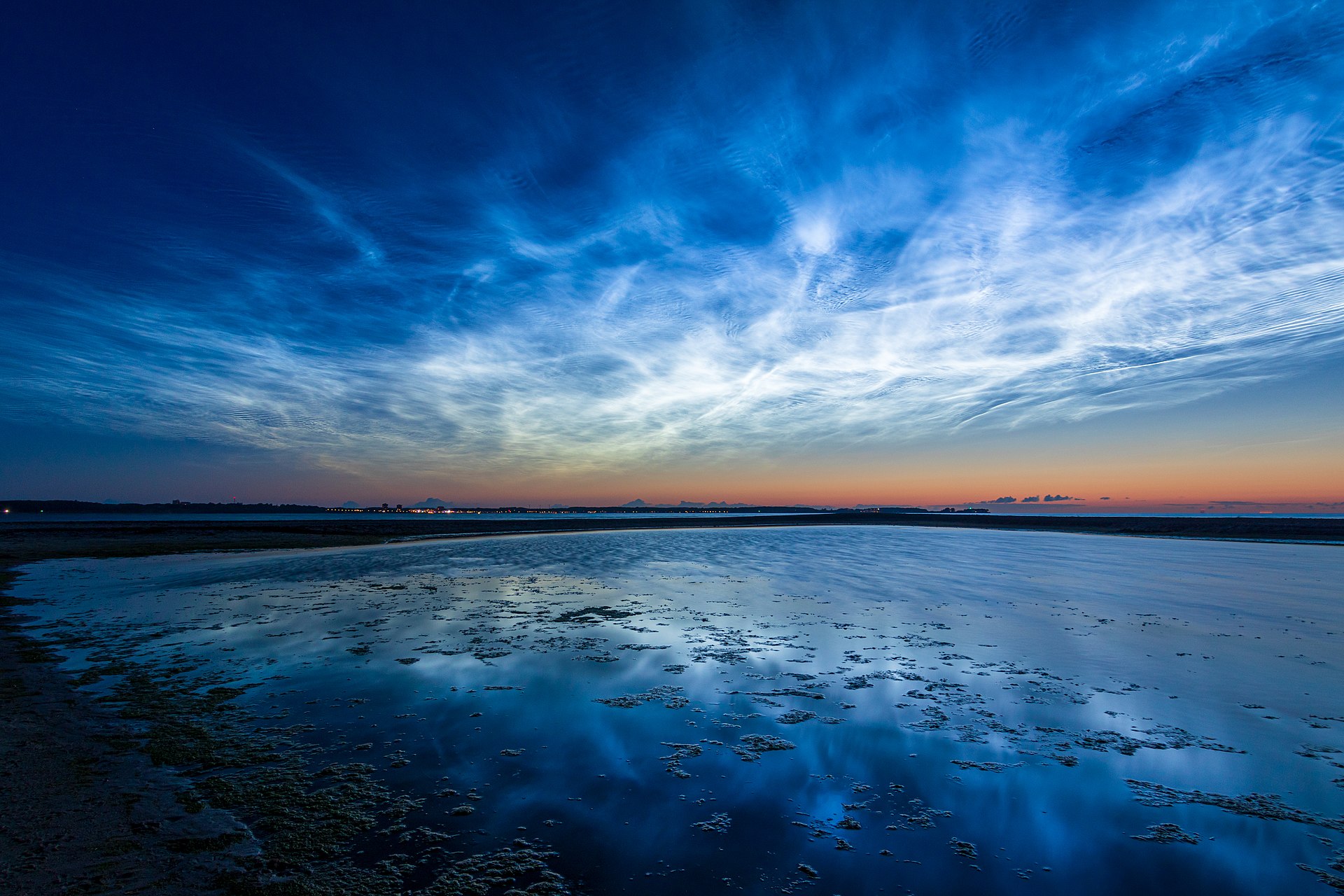
Highly reflective noctilucent clouds, formed from large amounts of water vapor in the upper atmosphere, hang over Germany. New research finds that injections of water vapor into the upper atmosphere during space launches can form these icy clouds over the Arctic. Credit: Wikimedia commons/ Matthias Süßen/CC BY-SA 4.0
Featured Research
Weather “whiplash” taxes California’s water system
California relies on reservoirs and dams to generate power, fuel agriculture and feed waterways. Strong atmospheric river storms can end droughts, but rapid increases in reservoir water levels threaten dam infrastructure and reduce power generation. Future infrastructure projects should focus on creating more resilient reservoirs and recharging groundwater, according to a new study. [Water Resources Research research]
Space launches spawn noctilucent summer clouds in the Arctic
Space traffic take-offs release large water vapor plumes. Within days, winds carry this vapor into the Arctic Circle, new research finds. In July, when the upper atmosphere is coldest, the water vapor can form noctilucent or “night shining” clouds 50 miles above the Earth. [Earth and Space Science research]
A new look at old moon data: Apollo-era moonquakes more common than previously thought
New analysis of an archive of messy lunar quake observations, collected at Apollo landing sites between 1969 and 1977, finds that the Moon had 2.6 times more quakes during that period than previously known. The moon’s northern hemisphere was also more seismically active than its southern hemisphere, where NASA plans to land its Artemis III mission. [JGR Planets research]
Cosmic electron beams could interfere with measurements of Europa’s ocean
Powerful electron beams discovered near Europa by the Juno spacecraft may affect the space environment surrounding the moon, which could alter how scientists measure Europa’s subsurface ocean. [Geophysical Research Letters research]
Dim and slow meteors can still generate luminous trains
Meteors leave behind self-illuminating “trains” as they hurtle through the atmosphere. New observations of approximately 7,000 meteors reveal that meteor trains are more common than previously thought, and that slower-moving meteors leave trains just as frequently as faster-moving meteors. [JGR Space Physics research]
Supersharp images reveal scars of major eruption on Io
Jupiter’s volcanic moon is captured in exquisite detail by an instrument atop a mountain in Arizona. [Eos research spotlight][Geophysical Research Letters research]
Dry, cracked ground can “breathe” as environmental conditions change
Researchers used a network of fiber-optic cables to detect soil cracking in dry conditions, and found that soil cracks can expand and contract based on climate conditions. [Eos editor’s highlight][JGR Earth’s Surface research]
###